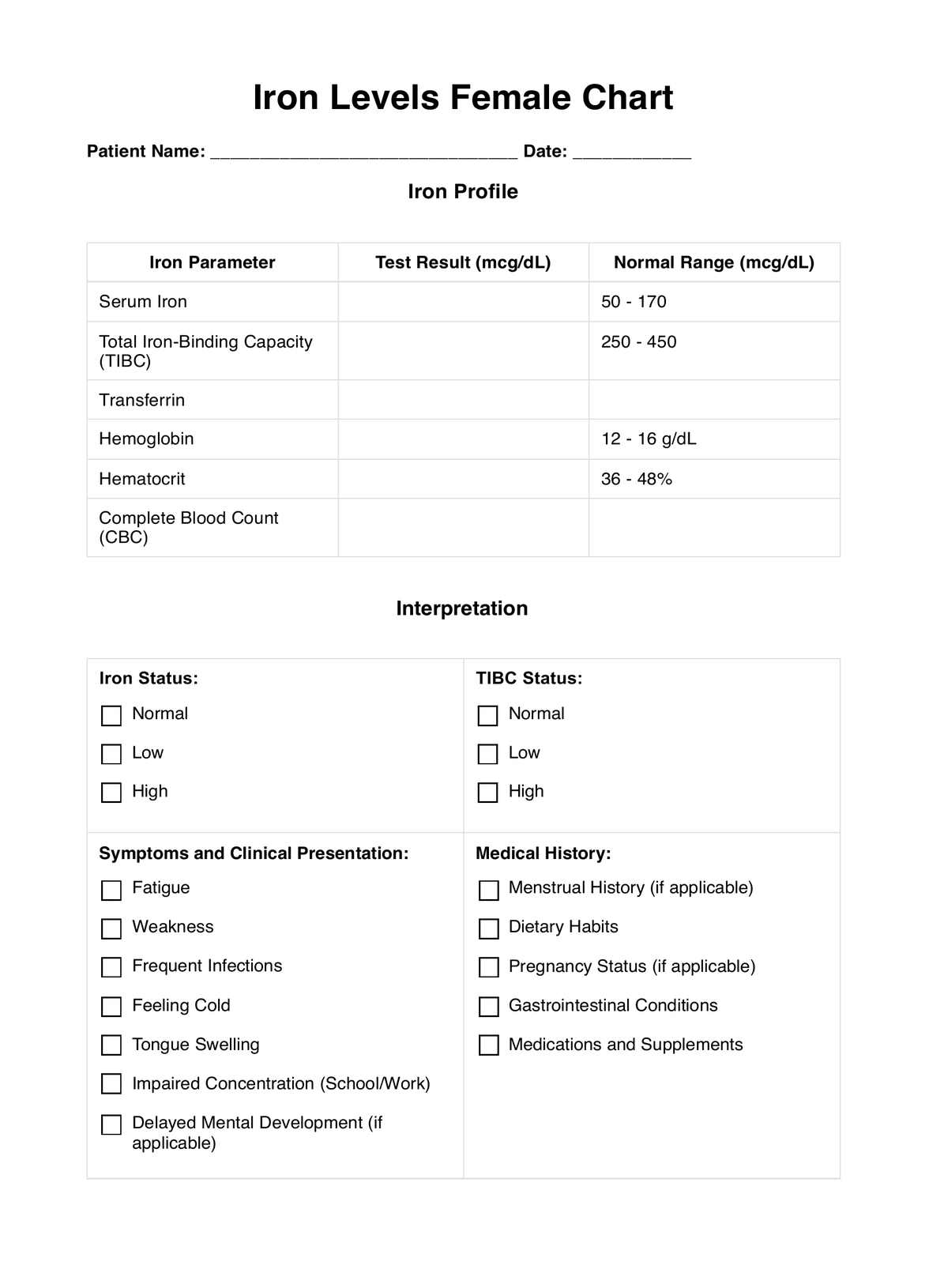ADHD And Aging: Exploring The Impact Of Brain Iron Levels

Table of Contents
The Persistent Symptoms of ADHD in Older Adults
A common misconception is that ADHD simply disappears with age. However, the reality is that many individuals continue to experience ADHD symptoms throughout their lives. While the presentation might shift, the underlying challenges often persist, significantly impacting quality of life. The prevalence of ADHD in older adults is increasingly recognized, highlighting the need for continued research and tailored support.
-
Many individuals continue to experience ADHD symptoms throughout their lives. Symptoms may not be as outwardly noticeable as in childhood or adolescence, but they can still create substantial difficulties. This persistent struggle can lead to significant challenges in daily functioning.
-
These symptoms can manifest differently in older adults compared to younger individuals. While hyperactivity might lessen, challenges with executive functions like planning, organization, and time management often remain prominent. Difficulties with working memory and sustained attention are also frequently reported.
-
Challenges in executive function, organization, and time management often persist. This can lead to difficulties in managing finances, adhering to medication regimens, and maintaining social connections. The impact on daily tasks and overall well-being is considerable.
-
Comorbidities like anxiety and depression are more common in older adults with ADHD. The chronic stress associated with managing ADHD symptoms throughout life can increase vulnerability to mental health issues. This underscores the importance of comprehensive care addressing both ADHD and co-occurring conditions.
Studies consistently demonstrate that a significant portion of individuals diagnosed with ADHD in childhood continue to experience symptoms into adulthood, and these symptoms can significantly impact their daily functioning and overall quality of life in later years. These challenges highlight the need for appropriate diagnosis and management strategies tailored to the specific needs of older adults with ADHD.
The Role of Brain Iron in Cognitive Function
Iron plays a vital role in various aspects of brain function. It's a crucial component in the production of neurotransmitters, chemical messengers that transmit signals between nerve cells. These neurotransmitters, including dopamine, are essential for cognitive processes such as attention, focus, and executive function. Iron also contributes to brain energy metabolism, ensuring the brain has the fuel it needs to operate efficiently.
-
Iron is crucial for neurotransmitter production and brain energy metabolism. Imbalances in iron levels can disrupt these essential processes, potentially contributing to cognitive difficulties.
-
Excess iron can contribute to oxidative stress and neuroinflammation. Oxidative stress is an imbalance between the production of reactive oxygen species and the ability of the body to detoxify them. It damages cells and tissues, potentially leading to neuronal dysfunction.
-
Oxidative stress is linked to neurodegenerative diseases. The chronic damage caused by oxidative stress is implicated in the development of various neurodegenerative conditions, including Alzheimer's disease and Parkinson's disease.
-
Iron dysregulation may be associated with cognitive decline. Research suggests that disruptions in brain iron homeostasis can contribute to cognitive impairment, impacting memory, attention, and executive functions.
Brain iron metabolism is a tightly regulated process involving several proteins that transport and store iron within brain cells. Disruptions in this delicate balance can have far-reaching consequences on cognitive function. Maintaining optimal iron levels is crucial for preserving brain health and cognitive performance throughout life.
The Link Between Brain Iron, Aging, and ADHD Symptoms
The hypothesis that increased brain iron levels may exacerbate ADHD symptoms as we age is gaining traction. Age-related changes in iron metabolism, such as reduced iron clearance, could lead to iron accumulation in specific brain regions. This accumulation might disrupt neurotransmitter function and contribute to the persistence or worsening of ADHD symptoms.
-
Age-related changes in iron metabolism might intensify ADHD symptoms. As we age, the efficiency of iron regulation might decline, leading to an imbalance and potential accumulation in the brain.
-
Studies investigating the correlation between brain iron and ADHD severity in older adults. While research in this area is still in its early stages, some studies are beginning to explore the link between elevated brain iron levels and the severity of ADHD symptoms in older individuals.
-
Potential mechanisms by which iron accumulation could influence ADHD-related brain regions. Increased iron levels could trigger oxidative stress and neuroinflammation in brain regions critical for attention, executive function, and impulse control, potentially worsening ADHD symptoms.
-
Need for further research to confirm this connection. More research is needed to solidify the understanding of this complex relationship and to identify potential therapeutic targets.
Currently, research exploring the direct link between brain iron levels, aging, and ADHD symptom severity is limited. However, the existing evidence suggests a potential area for future investigation, potentially offering novel avenues for treatment.
Potential Implications for Treatment
The potential implications of this research are significant for the treatment of ADHD in older adults. A better understanding of the role of brain iron in ADHD could lead to the development of novel therapeutic approaches.
-
Could iron chelation therapy be a potential future treatment option? While still highly speculative, the possibility of using iron chelation therapy – a treatment that removes excess iron from the body – to alleviate ADHD symptoms warrants further investigation. This would need rigorous testing and only be considered under strict medical supervision.
-
The importance of personalized treatment approaches considering age-related factors. Treatment strategies should be tailored to the individual's age, overall health, and the specific symptoms experienced.
-
Continued monitoring for the evolution of ADHD symptoms in older adults. Regular monitoring is crucial to assess the effectiveness of treatment and adjust strategies as needed.
Before any new treatments are considered, extensive research is required to establish efficacy and safety. Currently, standard ADHD treatments remain the primary approach for managing symptoms.
Conclusion
The relationship between ADHD, aging, and brain iron levels represents a complex and exciting area of ongoing research. While more studies are needed to fully understand this connection, the evidence suggests that changes in brain iron metabolism may play a significant role in the persistence and evolution of ADHD symptoms throughout life. Understanding this link could lead to new and improved treatment strategies for older adults with ADHD. Continue learning about the latest research on ADHD and aging to better understand and manage this condition as you age. If you suspect you might have ADHD, or if you're experiencing persistent challenges related to ADHD as you age, consult with a healthcare professional to discuss your concerns and explore appropriate diagnostic and treatment options. Don't hesitate to seek support; effectively managing brain iron levels and ADHD symptoms is crucial for optimal well-being at any age.

Featured Posts
-
 First Look Porsches Revolutionary Macan Electric Drive
Apr 29, 2025
First Look Porsches Revolutionary Macan Electric Drive
Apr 29, 2025 -
 Missing Person British Paralympian Sam Ruddock Last Seen In Las Vegas
Apr 29, 2025
Missing Person British Paralympian Sam Ruddock Last Seen In Las Vegas
Apr 29, 2025 -
 Posthumous Pardon Trumps Decision On Pete Roses Baseball Ban
Apr 29, 2025
Posthumous Pardon Trumps Decision On Pete Roses Baseball Ban
Apr 29, 2025 -
 Bundesliga Abstiegskampf Klagenfurt Sucht Neuen Trainer Jancker Im Fokus
Apr 29, 2025
Bundesliga Abstiegskampf Klagenfurt Sucht Neuen Trainer Jancker Im Fokus
Apr 29, 2025 -
 Adhd En Levensverwachting Klopt Het Dat Volwassenen Met Adhd Korter Leven
Apr 29, 2025
Adhd En Levensverwachting Klopt Het Dat Volwassenen Met Adhd Korter Leven
Apr 29, 2025
Latest Posts
-
 How To Watch Ru Pauls Drag Race Season 17 Episode 9 For Free
Apr 30, 2025
How To Watch Ru Pauls Drag Race Season 17 Episode 9 For Free
Apr 30, 2025 -
 Watch Ru Pauls Drag Race Season 17 Episode 8 Online Free No Cable Needed
Apr 30, 2025
Watch Ru Pauls Drag Race Season 17 Episode 8 Online Free No Cable Needed
Apr 30, 2025 -
 How To Watch Ru Pauls Drag Race Season 17 Episode 8 For Free
Apr 30, 2025
How To Watch Ru Pauls Drag Race Season 17 Episode 8 For Free
Apr 30, 2025 -
 Unexpected Family Ties Nba Legend And Ru Pauls Drag Race Contestant
Apr 30, 2025
Unexpected Family Ties Nba Legend And Ru Pauls Drag Race Contestant
Apr 30, 2025 -
 Watch Ru Pauls Drag Race Live 1000th Show Global Livestream From Vegas
Apr 30, 2025
Watch Ru Pauls Drag Race Live 1000th Show Global Livestream From Vegas
Apr 30, 2025
